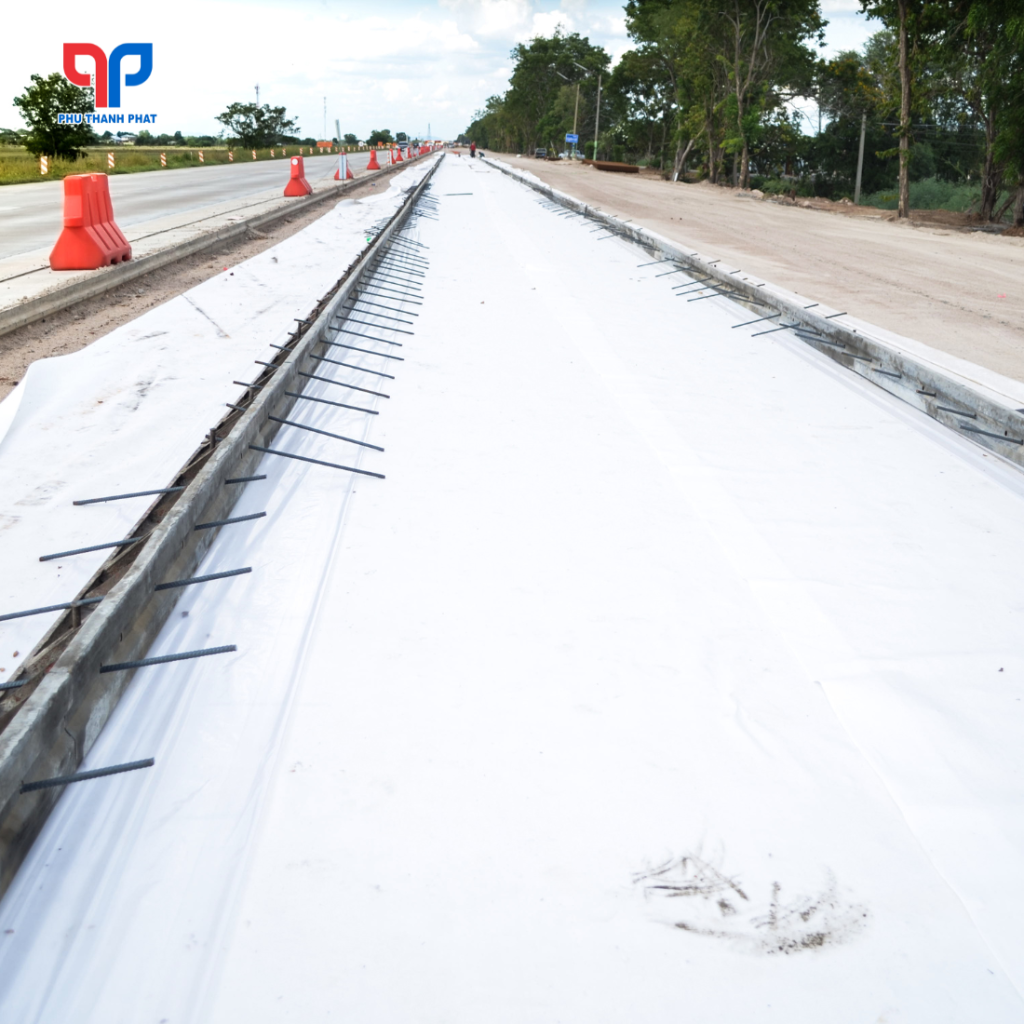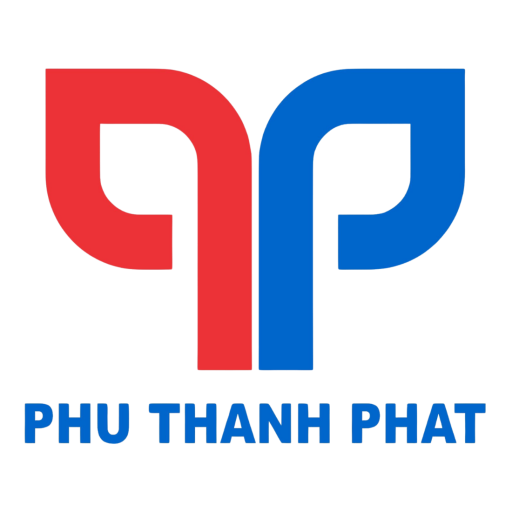The application of woven geotextile GT is not merely a technical solution but a significant advancement in enhancing the efficiency and durability of transportation infrastructure, especially when facing challenges from weak subgrades and increasing traffic loads. So, why is it necessary to utilize woven geotextile GT for roadbed reinforcement projects? Let Phu Thanh Phat guide you through this topic in the article shared below!
Roadbed – Roadbed Construction
The roadbed (or subgrade) is the bottommost structural layer of a road infrastructure project. It plays a crucial role in directly bearing the load from the upper structural layers (pavement, base course) and transferring it to the natural soil. The roadbed construction process typically involves the following key stages:

- Site Preparation: Clearing, leveling, cut and fill operations to achieve the designed shape and elevation.
- Weak Subgrade Treatment: Implementing technical measures such as soil reinforcement with soil cement columns, sand drains, geotextiles, etc., to enhance the bearing capacity and stability of the subgrade.
- Embankment Construction: Transporting, placing, and compacting fill materials (typically soil, rock, aggregates) in specified layer thicknesses to achieve the required compaction.
- Compaction: Utilizing specialized compaction equipment (rollers) to increase the density and stability of the fill material layers.
- Quality Control: Conducting laboratory and field tests to check compaction degree, moisture content, shear strength, etc., to ensure the roadbed meets technical specifications.
The quality of the roadbed directly impacts the lifespan, durability, and safety of the entire transportation infrastructure. A stable roadbed with good bearing capacity ensures smooth vehicle movement and minimizes maintenance costs during its service life.
Why Apply Woven Geotextile GT for Roadbed Reinforcement?
In the context of numerous transportation projects being constructed on weak subgrades, the application of advanced technical solutions for roadbed reinforcement is essential. Woven geotextile GT, manufactured from interwoven synthetic polyester yarns using a weaving process, forms a fabric with high tensile strength, low elongation, and excellent resistance to UV radiation and chemicals. The use of woven geotextile GT in roadbed reinforcement offers several significant benefits:
- Enhanced Bearing Capacity: Acts as a reinforcement layer, distributing concentrated stresses from the upper structural layers to the subgrade. This allows the roadbed to withstand heavier loads without excessive settlement or localized failure.
- Weak Subgrade Stabilization: Creates a separation and reinforcement layer, preventing the intermixing of fill material and subgrade soil. Simultaneously, it increases shear strength along potential failure surfaces, enhancing slope stability and resisting landslides.
- Reduced Settlement: Limits lateral deformation of the roadbed, thereby minimizing total and differential settlement. This ensures a smooth road surface throughout its service life.
- Material and Construction Time Savings: Helps reduce the required thickness of the fill material layers, shortening the construction time due to decreased earthwork volume (excavation and material transport).
- Increased Infrastructure Lifespan: Contributes to extending the service life of the entire transportation infrastructure, minimizing maintenance and repair costs.
- Consolidation Settlement Control: Used in conjunction with drainage solutions to accelerate the consolidation process of weak subgrades, leading to faster stabilization of the structure.
Notable Roadbed Projects Utilizing Woven Geotextile GT Reinforcement
- Ring Road 4 – Hanoi Capital Region (Component 2.2): GT 20; GT 40; GT 200 (2023–2024)
- Tan Phuc – Vong Phan Road (Intersection DT.378): GT 20; GT 40 (2023–2024)
- Cao Lanh – An Huu Expressway (Component 1/Phase 1): GT 20; GT 40 (2024)
- Ho Chi Minh Highway (Rach Soi – Ben Nhat, Go Quao – Vinh Thuan): GT 20; GT 40; GT 200 (2024)
- Chau Doc – Can Tho – Soc Trang Expressway (Component 4/Phase 1): GT 20; GT 40 (2024–2025)
Conclusion
Woven geotextile GT is an effective and economical solution for roadbed reinforcement, particularly for projects constructed on weak subgrades. With its high tensile strength, superior durability, and numerous other advantages, woven geotextile GT has proven its crucial role in enhancing the quality of infrastructure projects. If you have any inquiries or require consultation regarding woven geotextile GT for your project, please leave your information or contact Phu Thanh Phat directly. We will provide prompt support and address your questions as soon as we receive your information.
CONTACT INFORMATION
Head Office: 15 Street 5, Vinh Loc Residential Area, Binh Hung Hoa B Ward, Binh Tan District, Ho Chi Minh City
Hotline: 028.666.03482 – 0909.452.039 – 0903.877.809
Email: info@vaidiakythuat.com
